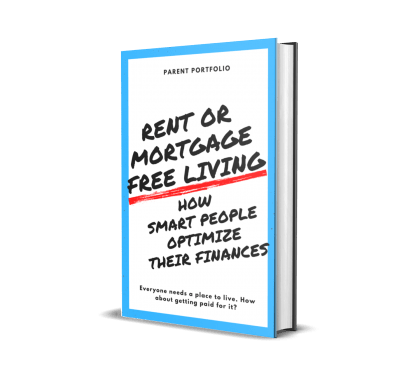Financial Clarity: Prioritize Your Spending for Financial Success

You’ve decided to change your money mindset, control your finances, and create a budget. This article will help you get started on how to prioritize your needs vs wants. So, pull out a pen and paper, and let’s get started.
What Are Needs?
Famous psychologist Abraham Maslov developed a theory called “Maslov’s Hierarchy of Needs.” Per this theory, humans have basic necessities for life: Shelter, food, water, and sleep.
We must first meet these physiological needs before we go on to satisfying others. Therefore, these physiological needs must also form the backbone of our budget.
Shelter expenses include rent or mortgage payments, utilities, insurance, and property taxes, and usually are the needs that take most of the budget.
Food and water expenses are self-explanatory, but it should be noted that there is a difference between food for survival and indulgence. When we’re talking needs, we’re talking survival, the basics, not fancy haute cuisine.
Sleep, thankfully, is something that shouldn’t break the budget.
What Are Wants?
Wants are the discretionary spending of your budget, including most spending on clothing, recreational activities, vacations, etc.
There may only be room in your budget for some of your wants, so prioritize them. List your most important wants first, then move on to the less important ones.
Can We Cut Back on Needs?
Just because something is a need doesn’t mean it can’t and shouldn’t be trimmed in the budget.
For example, transportation can be a considerable part of your budget. If you own a car, you’ll also be paying for registration, fuel, insurance, and maintenance and perhaps even a loan payment for the car itself. And most American households now have more than one car.
Sometimes we must step back and ask, “Is this necessary ?” Perhaps your knee-jerk reaction will be to say, “Of course, it is, my husband drives to work, and I have to pick up the kids from school.”
Are there alternatives that are not quite as convenient? For example, could your husband take the bus to work, carpool, or work from home occasionally? Or could the kids take the bus? Could you carpool with neighbors to get them home?
There are often alternatives, but we choose not to see them because they aren’t as convenient.
Scrutinize Every Need
Part of the budgeting process is to scrutinize every need. Here is a list of “needs” to consider:
Insurance
Insurance is a great place to start. I’m not suggesting dropping your insurance policies but shopping around and getting quotes from other companies. Insurance of various types is a large portion of our budgets and is one of the areas where a little shopping can yield big payoffs.
A couple of years ago, my insurance company jacked up my daughter’s annual car insurance premium, which went from around $1,000 to $ 2,000, and mine also increased to over $1,000. Remember that we both drive cars with over 100,000 miles on them. $3,000 for car insurance just wasn’t in the budget.
I had kept my vehicle insurance policy with this company as initially, when I took out the policy for my farm, I had to have a vehicle insured with them.
When I called to inquire about changing to more affordable coverage, I found out I didn’t need to have a vehicle on the farm policy anymore. But unfortunately, I couldn’t put different insurance coverage levels on each car. This made no sense to me, so I opted to shop for a new car insurance company.
I obtained quotes from several car insurance companies and cut my insurance bill by more than half, saving $1,500 a year. Well worth a few phone calls.
Utilities
Utilities are another area that you can trim. For example, per the United States Department of Energy, turning down the thermostat just one degree overnight saves an average of 3% on the heating bill.
And that cable bill? That isn’t even a need and goes into the wants budget. Have you compared your cell phone bill with other companies recently? The cellular phone market has recently become quite competitive, and you might find that you can shave some off that bill too.
Groceries
Of late, grocery prices have been skyrocketing. Every time I go grocery shopping, the prices have increased yet again. However, there are ways to keep your grocery bill in check. Avoid packaged foods and buy more staples, use coupons, and shop the weekly specials flier. Also, stock up on items that are on sale.
After a while, this almost becomes like a game; how low can you go?
Are There Grey Areas Between Needs vs Wants?
As you progress through the budgeting process, you’ll probably identify some grey areas in your expenses; things that fall into the categories of shelter, food, transportation, and sleep but present you with choices.
We discussed the multiple-vehicle family and identified that multiple vehicles weren’t a necessity but a luxury.
Another grey area can be groceries. One 4-person family may get by on $250.00 a week while another might feel strapped if restricted to $300.00.
What figure should go into the budget? A smart budgeter will enter the $250.00 as the weekly grocery allowance for their 4-person family but might then add $50.00 in the wants area of their budget for the grocery items they’d love to have but aren’t necessities. Then, if there is room in the budget, they can buy these wants; if not, they’ll have to wait.
Budgeting Methods
The whole goal of a budget is to make ends meet and start boosting savings for future life events, including funding an emergency fund, saving for children’s education, saving for a home, retirement, or perhaps a sabbatical year where you might want to travel the world.
There are many different methods for creating a budget. Following is a list of some of the more common formulas and a brief description of each and who should use them.
50/30/20 Budget
This budget method takes your after-tax income and allows 50% for needs, 30% for wants, and 20% for savings. Pros of this method are that it helps keep your needs slim and allows for a fair amount of savings. A con of this method is that it doesn’t consider existing debt.
Pay Yourself First Budget
This budgeting method suggests taking your desired savings % of your income and putting it aside before starting your budget. Then, the spendable income that you can use for needs and wants is the income that remains after you take out your savings.
This method prioritizes savings and goals and is simple as it doesn’t require tracking spending. However, the pay-yourself-first method will work for those who aren’t having to penny-pinch or worry about debt and is not advisable for those who don’t have a lot of self-control. Also, since you’re not monitoring your spending, it could lead to more debt.
70/20/10 Budget
This budget allows 70% for essentials, 20% for savings, and 10% for debt or donations. Note that this method doesn’t delineate between needs and wants. Lumping spending into “essentials” may be because the 10% debt encapsulates your wants.
This budget method might fit the average American family better than the methods above since most Americans graduate school with debt. However, this simple method fails to make an individual responsible for identifying needs and wants.
Final Thoughts
The best method to choose is the one that works for you. The 50/20/20 is a good scenario to strive for and has more structure than the other methods, so it is the easiest method to stick to, but if you have debt and feel drawn to the 70/20/10 method, by all means, opt to follow that method.
Understand that these methods set “ideals.” It’s pretty realistic that a young person just entering the workforce won’t have the means to save 20% of their income, but setting goals and tweaking spending will put them in a better financial place than doing nothing. Awareness, goals, and mindset are half the battle when creating a successful budget.






